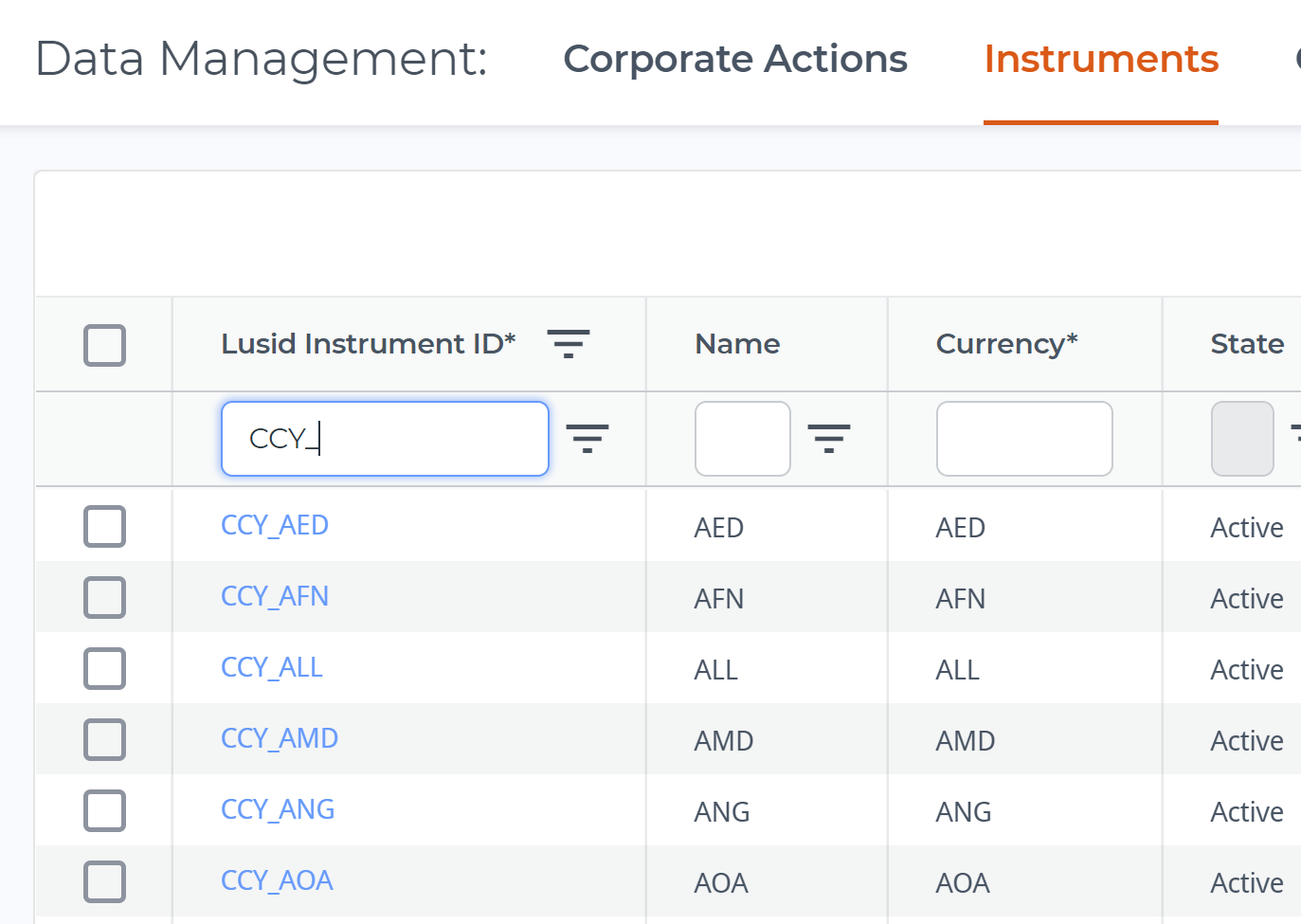Your LUSID domain is prepopulated with a basket of currencies, so creating a new currency should not be a common operation. However, you can do so if you need to model a currency that is not in the list, for example a cryptocurrency.
Each currency is identified in the LUSID instrument master by its ISO 4217 currency code (for example GBP) and an automatically-generated LUSID Unique ID (or LUID) that prefixes the currency code with CCY_ (so for example CCY_GBP). Note the following LUIDs are reserved:
CCY_ZZZfor the unknown currency. Note that, unlike non-currency instruments, LUSID does not automatically map unknown cash transactions to the unknown currency, so these data load operations will fail.CCC_XXXfor a 'transaction' involving no currency.
Note: To see how to model a non-currency instrument such as an Equity, Bond, Future, Swap and more, start with this article.
Using the LUSID REST API
You can create up to 2000 instruments in a single API request.
Call the LUSID UpsertInstruments API for your LUSID domain, passing in your API access token and, for each currency instrument:
An ephemeral ID (to track errors in the response)
A display name
A single unique identifier of type Currency.
An identifier value consisting of the ISO 4217 code of the currency you want to create.
Note that a new instrument is created if the display name and identifier value you specify in the API request do not yet exist in the built-in default instrument scope. Otherwise, an existing instrument is updated. Note currency instruments only exist in the default scope; you cannot upsert a currency to a custom scope.
For example, to create a new instrument representing the ISO 4217 test code XTS (note this is not a meaningful currency):
If the request is successful, the response reveals the LUID for the instrument, in this case CCY_XTS:
Using the LUSID web app
Sign in to the LUSID web app using the credentials of a LUSID administrator.
From the left-hand menu, select Data Management > Instruments.
On the Instruments dashboard, click the Create instrument button.
Enter a unique Instrument name and add an Instrument identifier of type Currency and a value of the ISO 4217 code, for example
XTS:

If the request is successful, LUSID automatically generates a LUID consisting of the prefix
CCY_and the code, so in this caseCCY_XTS.
Listing the prepopulated basket of currencies
You can list the basket of currencies in the LUSID instrument master by calling the LUSID ListInstruments API with a filter of identifiers['Currency'] exists, for example:
Alternatively, sign in to the LUSID web app and enter the prefix CCY_ in the LUSID Instrument ID column of the Instruments dashboard:

